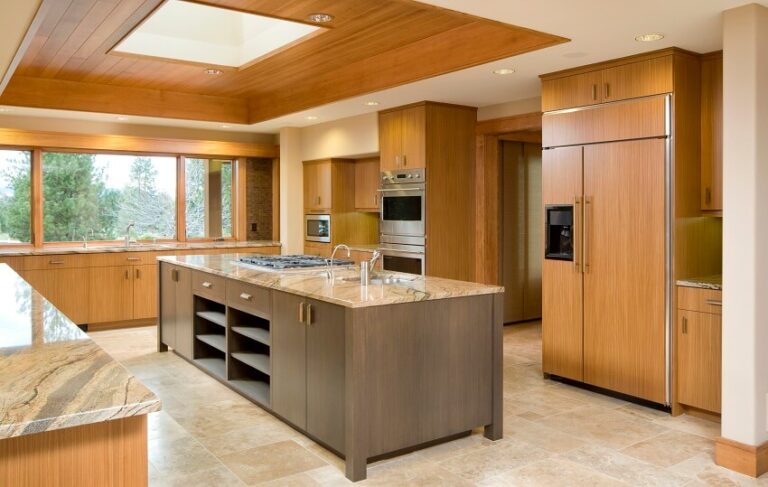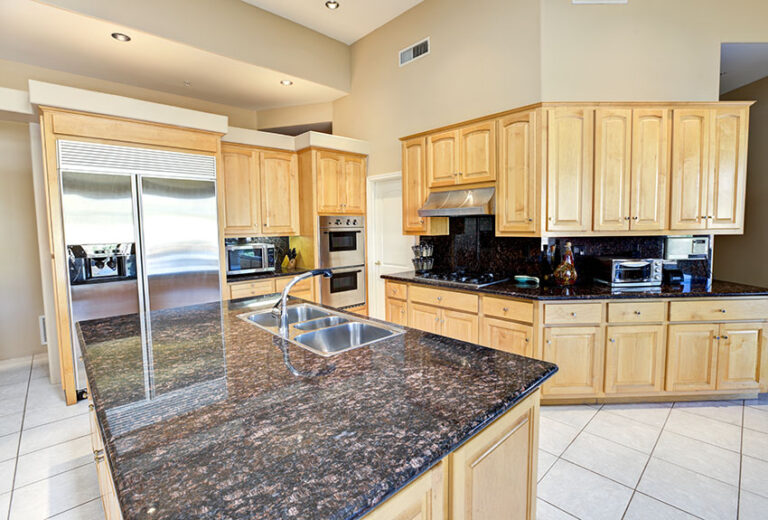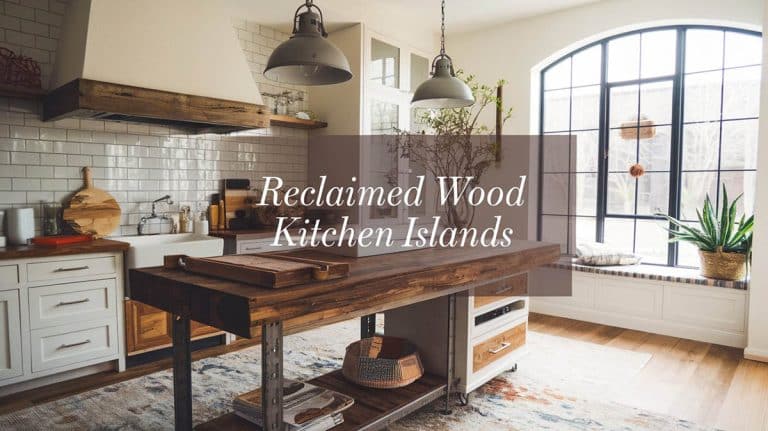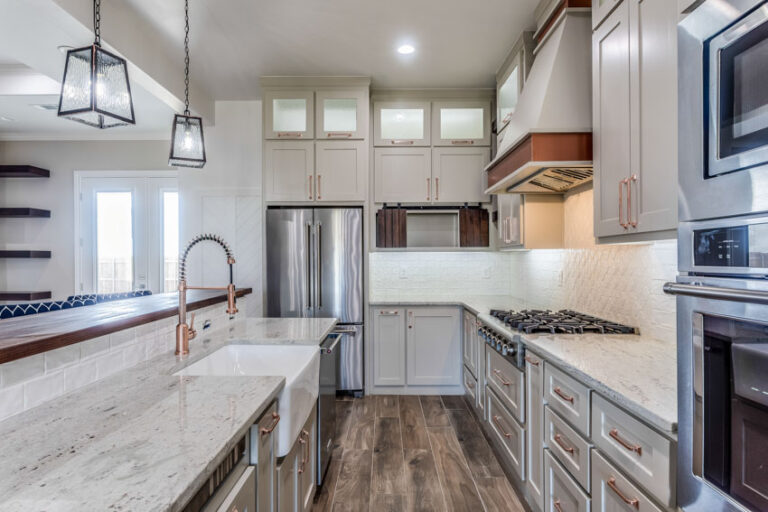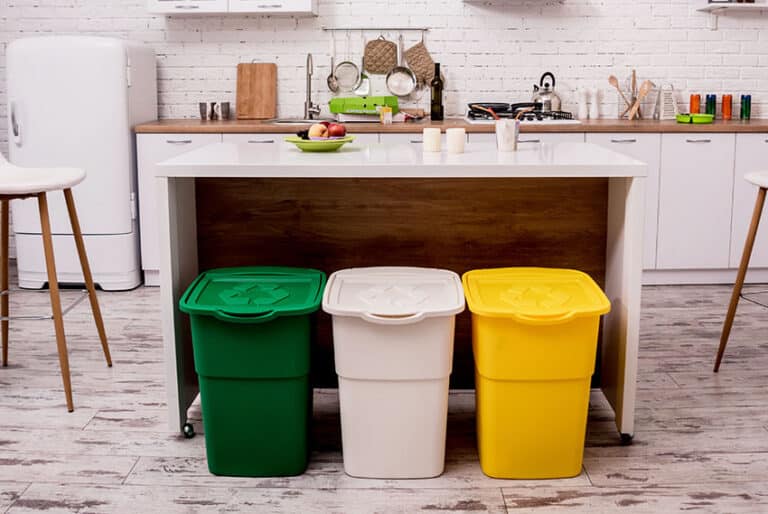Butcher Block vs Granite Countertops
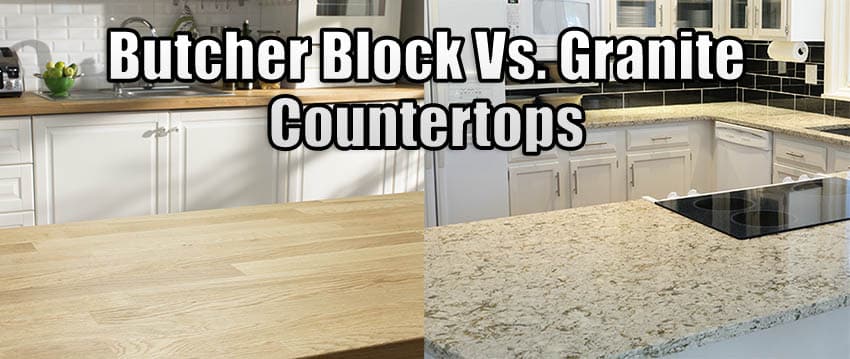
When choosing countertops for your kitchen, many materials are available. Two of the most common materials used are butcher block and granite. A butcher block is made from wooden strips bonded together with glue to form a slab. Granite is a more modern choice for countertops and a popular material for many homeowners. Each slab is completely different and provides a cool, sleek look for kitchens.
Granite counters are made from natural stone, reflecting a variety of colors and natural-made designs. The layers of stone shimmer under its smooth and shiny surface, revealing the depth of the stone. This guide will discuss the pros and cons of butcher block vs granite countertops and the cost of each selection to help you choose the best option for your kitchen.
Butcher Block vs. Granite Countertops Pros & Cons
Trying to decide on which material to use means weighing the pros and cons for butcher block countertops and granite. Considering the appearance includes whether your kitchen design lends itself to the natural and woodsy feel of butcher block or the modern, clean design of granite.
Next, durability matters considering the amount of use your kitchen gets, and maintenance depends on how much work it takes to keep the countertops looking good. Let’s compare these two popular materials.
Appearance
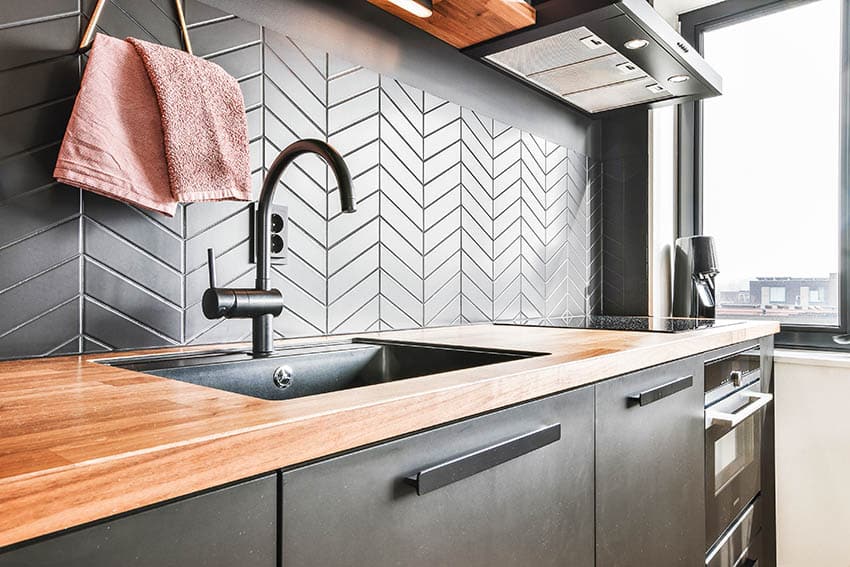
Butcher block, as discussed, is a warm and cozy countertop surface perfect for family-style kitchen and dining room areas. A large country kitchen that’s open to the dining room invites that earthly feel of butcher block.
With numerous wood types to choose from, butcher block countertops allow for many wood grains and colors. Maple is a blonde color and the most popular wood used for butcher block counters. It has a distinct grain that is very appealing and provides a beautiful contrast to darker finishes.
Cherry and red oak woods are darker, rich-colored wood, and walnut offers the darkest shades of deep brown. Butcher block countertops never go out of style and all types of wood are neutral and can be paired with almost any other material.
Butcher Block Appearance Pros:
- Wide variety of colors and hardwood grain styles to choose from
- Many different wood edge profiles
- Beautiful counter surface
- Works with all kitchen styles
- Adds warmth to the kitchen
Butcher Block Appearance Cons:
- Dents and scratches can be seen
- Water damage can occur easily
Granite is also versatile, with unlimited designs and colors naturally woven into the stone slabs. The colors range from almost solid black to a mosaic of cobalt blue with golden yellow and oranges striations or deep reds of rosewood.
Granite countertops can be understated using lightly monochromic stone with hints of gray on a white background. They provide unlimited designs and colors to match any room in your home.
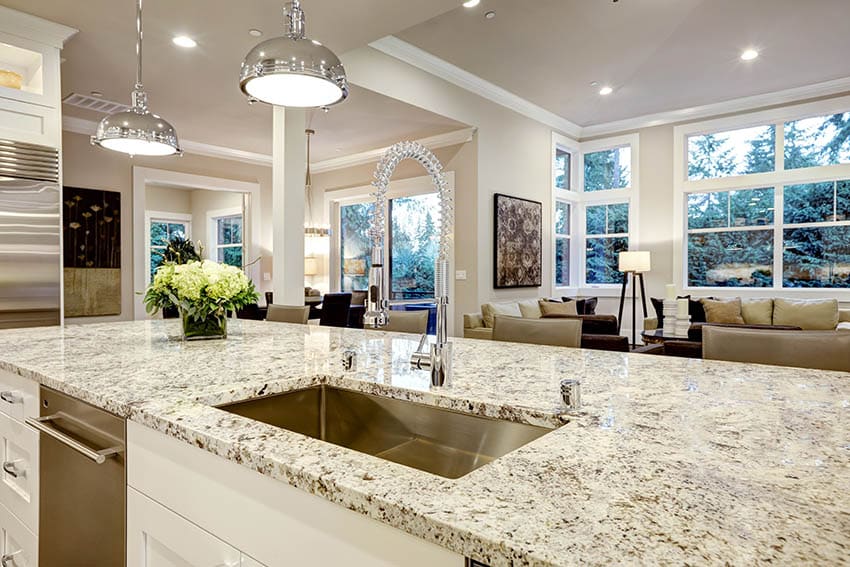
Granite Appearance Pros:
- Attractive look
- Adds value to the home
- Unlimited colors to choose from
Granite Appearance Cons:
- Difficult to change the look
- Each slab is different which may make matching difficult
Durability

When it comes to durability, butcher block countertops made from hard rock maple offer the thickest density and long-lasting endurance.
Wood species differ in density and grain, making for some to be softer or harder than others. Hard rock maple, cherry, and walnut are all dense woods versus woods such as oak that are softer.
Higher density woods can withstand being cut on, but oak is too soft. All woods need to be protected from sharp objects and water penetration by treating the surface with special mineral oils.
Butcher Block Durability Pros:
- Multi-functional
- Helps provide a quieter kitchen by absorbing sound.
- Sustainable wood product
- DIY installation is possible
- Can be sanded and refinished for a brand new appearance
Butcher Block Durability Cons:
- May still want to use a cutting board to protect the surface
- It can expand and contract during temperature changes
- Can be easily burned or scorched
- Wood can warp and bend
Granite countertops are resistant to heat, allowing cooks to place hot pots, plates, and pans on the surface. This heat-resistant countertop material is also strong, and knives will not do any damage. On the contrary, this stone is strong enough to damage even the best kitchen knives.
Cutting on granite repetitively can easily dull the knife’s blade. Still, the stone is made from rock crystals pressed together, making it susceptible to chips from high-impact, such as dropping a cast iron pan on the countertop.
Granite Durability Pros:
- Heat resistant
- Long lasting & durable
- Won’t absorb liquids
Granite Durability Cons:
- May need extra structural support due to the weight of granite slabs
- Needs professional installation
Maintenance
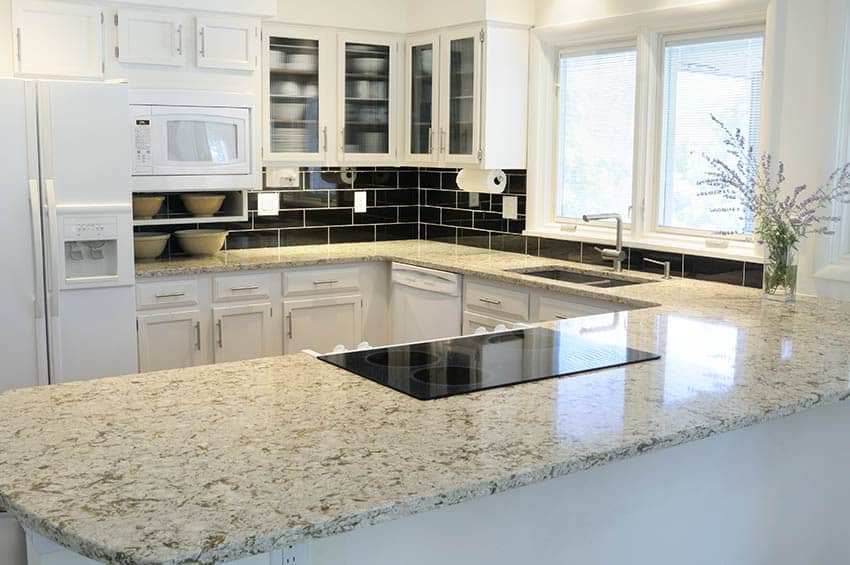
Butcher block countertops must be treated to prevent water from building up and causing the wood to warp. Wood kitchen counters must be finished and sealed and require oiling every six months.
Different wood species need to be treated with specific oils recommended by the manufacturer or installer. Wood is soft compared to granite and can develop surface damage, such as scratches, nicks, and burns with a lot of use.
Before regular oiling, the surface can be sanded with fine sandpaper to remove the blemishes. Clean butcher block countertops with a damp rag and mild soap.
Butcher Block Maintenance Pros:
- It can last several decades with proper maintenance
- Can be easily cleaned with household items
Butcher Block Maintenance Cons:
- Requires proper sealing and maintenance
- Needs oiling every 6 months
- Different woods need specific treatments
- Not easy to clean a butcher block surface
Granite countertops tend to be a bit porous based on the density of the stone. Do not leave liquids standing on the surface for an extended period. If liquids no longer bead up on the surface, the surface may need to be resealed. Clean these stone counters with a damp rag and mild soap or equal parts of water and vinegar. Do not use soaps that contain bleach or ammonia, which can be corrosive to the stone.
Granite Maintenance Pros:
- Sanitary
- Easy to clean with a mild detergent and water
Granite Maintenance Cons:
- Granite is porous and needs to be sealed
Butcher Block vs. Granite Cost
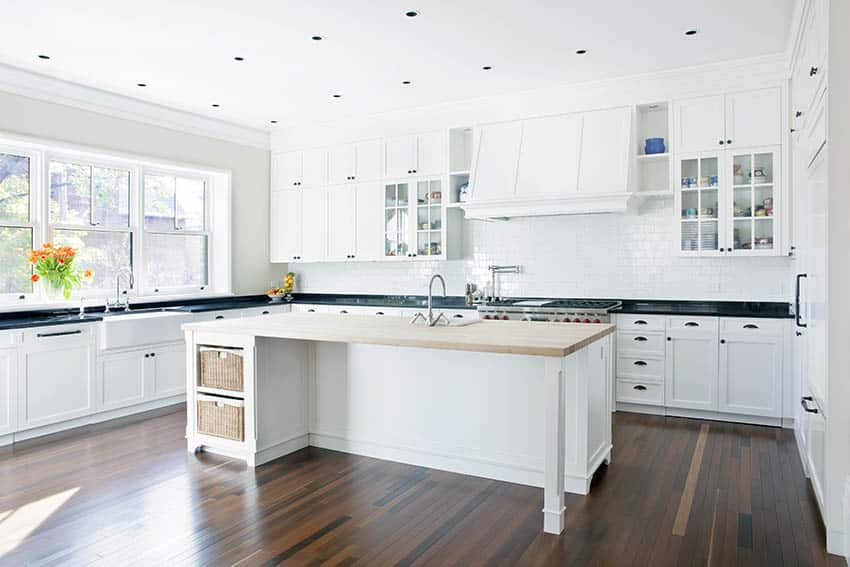
The cost for butcher block and granite countertops varies significantly according to what type of wood and how desirable the material is. Some stones offer rich and artistic colors and patterns. In contrast, other slabs are merely light surfaces with pastel hues of grays and browns. The rate of porosity of the stone also affects the price. Porosity is the amount of space between the flakes of stone. Granite is primarily non-porous compared to other stone countertops.
Wood species that are more durable cost more than softer woods, and the price of wood changes based on supply and demand.
- Butcher block countertops average between $35-$75 per square foot.
- Granite countertops cost between $35 and $100 per square foot.
For a kitchen that requires 30 square feet of countertop, butcher block averages $1,320 – $1,820, including installation, and granite averages $3,000 – $3,500 for 30 square feet.
Both types require similar amounts of maintenance, although granite costs almost twice that of wood. Often, homeowners will opt to use both options. Wood may be used for a kitchen island with granite for the counters, or a stone surface can be inlaid with a section of butcher block to create a cutting station.
Ultimately, your décor budget, home design, and the desired style you want will dictate what choices of materials you use for your countertops. For more content like this see our gallery of live edge wood countertops here.

